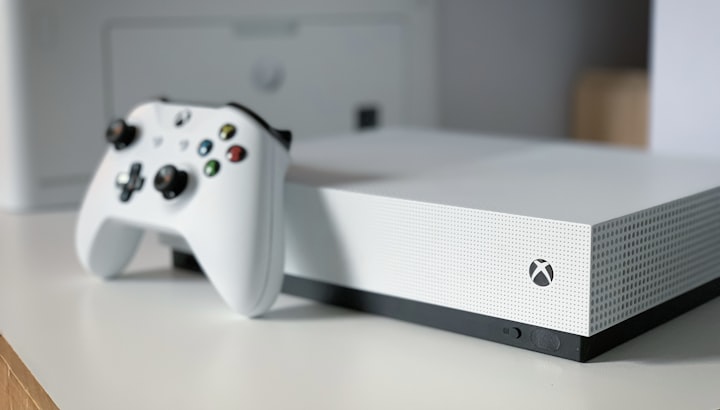
The Xbox Series S is a more affordable and compact alternative to the Xbox Series X, but despite its smaller size it still hosts some impressive capabilities without breaking the bank as much. Because of this, it's a great gateway into current-gen gaming without costing as much.
The Xbox Series S is designed to take the same generational leaps as the Series X, such as being capable of ray tracing, sporting lightning-fast load times, and showcasing higher frame rates, yet it remains to be significantly cheaper than its competitor, but there's certainly a hit to overall power and features.
The Xbox Series S is praised for its digital-only build, but surprisingly there is significantly less storage than the Xbox Series X. The console also targets a 1440p resolution rather than 4K, with the opportunity to upscale when connected to an Ultra HD display. But the console is designed to run optimally at lower resolutions. So you should take your display setup into account when thinking of purchasing the Series S.
Microsoft's more affordable Xbox also does away with the 4K HD Blu-Ray drive of the Xbox Series X, making this a digital-only affair. If you've amassed a large library of the best Xbox Series X games over the years, this alone could be a deal-breaker and means you're at the mercy of Microsoft's store pricing when it comes to buying new titles.These cutbacks might be too much for some users, then, but it makes the Xbox Series S a much cheaper and less hefty device as a result. Crucially, it's still capable of playing new-gen games, making this a great entry point into the Xbox ecosystem.
During our time with the Xbox Series S, we tested dozens of games – from last-gen Xbox Series X/S optimized hits including Halo: The Master Chief Collection, Forza Horizon 4, Doom Eternal, and Gears 5, to launch titles like Yakuza: Like a Dragon.
Each one impressed us, with smoother frame rates, increased resolutions (when compared to Xbox One, and Xbox One S), and faster load times, even if the games didn't look quite as pretty as they did running on the Xbox Series X. But that's mostly due to Xbox Series S targeting a lower resolution.
That said, for gamers who have no qualms about buying games digitally, or subscribing to Xbox Game Pass, you’re getting the full suite of next-gen features on Microsoft's cheaper console: Quick Resume, Auto HDR, 120Hz, you name it. The Xbox Series S is a great option for those wanting to experience new-gen gaming, without the sizable financial outlay required to own a full-blown console.As we've alluded to already, there are drawbacks to consider. If you prefer to purchase games physically, or have amassed a large collection of Xbox One games over the years, the Xbox Series S's lack of disc drive may put you off.
You only get a 512GB SSD, too, as there's no higher-capacity option. And while the console's SSD is dramatically faster than the old mechanical drives in the Xbox One X and Xbox One S, it can fill up fast. The five games we mentioned above almost took up the entire 512GB SSD on our review unit (you only get 364GB of usable space), leaving us with just 30GB of storage to play with.
That means if we wanted to install a game of that size to the system's internal drive, we'd likely have to delete something first (or additionally purchase the Seagate Xbox storage expansion card, which costs nearly as much as the Xbox Series S itself).
What may deter people from buying Microsoft's more affordable Xbox is the fact that it outputs at 1440p for gaming. This lower resolution is a firm favourite in the PC gaming space due to the superior image quality it provides over 1080p, and the lower amount of graphical grunt it requires from developers to achieve. This has allowed Microsoft to create a lower-spec machine that still boasts next-gen features.
If you own an Xbox One X, the drop to 1440p from native 4K can be noticeable. The Xbox One X could deliver games like Forza Motorsport 7 at 4K/60fps and is still capable of some sumptuous visuals. It's easy, then, to think that the Xbox Series S is a step back – however, it's capable of a lot more than Microsoft's aging Xbox One X, even if it doesn't always beat it in terms of resolution.
Looking at the system internals, the Xbox Series S separates itself from the One X with its vastly more powerful CPU and more technically capable GPU, courtesy of AMD's RDNA 2 architecture which enables cutting-edge features like ray tracing. Yes, the Series S has fewer teraflops than the Xbox One X (four compared to six), but teraflops are no longer the defining factor in how GPU power is determined.
For Xbox One owners looking to upgrade without breaking the bank, the Xbox Series S is a great option, if you can accept what it's been designed to achieve. If you've already got the Xbox One X and a 4K display at home, however, we suggest considering the Xbox Series X instead. Read on for our full Xbox Series






Comments
There are no comments for this story
Be the first to respond and start the conversation.